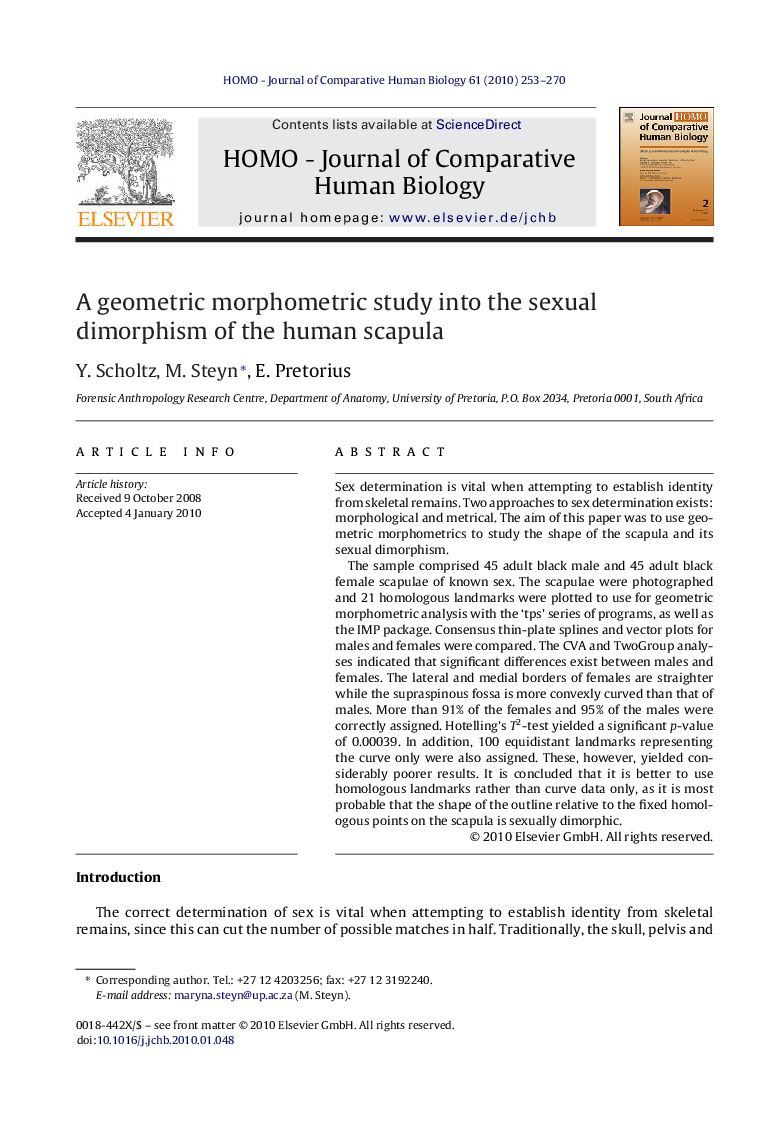| Article ID | Journal | Published Year | Pages | File Type |
|---|---|---|---|---|
| 100403 | HOMO - Journal of Comparative Human Biology | 2010 | 18 Pages |
Sex determination is vital when attempting to establish identity from skeletal remains. Two approaches to sex determination exists: morphological and metrical. The aim of this paper was to use geometric morphometrics to study the shape of the scapula and its sexual dimorphism.The sample comprised 45 adult black male and 45 adult black female scapulae of known sex. The scapulae were photographed and 21 homologous landmarks were plotted to use for geometric morphometric analysis with the ‘tps’ series of programs, as well as the IMP package. Consensus thin-plate splines and vector plots for males and females were compared. The CVA and TwoGroup analyses indicated that significant differences exist between males and females. The lateral and medial borders of females are straighter while the supraspinous fossa is more convexly curved than that of males. More than 91% of the females and 95% of the males were correctly assigned. Hotelling's T2-test yielded a significant p-value of 0.00039. In addition, 100 equidistant landmarks representing the curve only were also assigned. These, however, yielded considerably poorer results. It is concluded that it is better to use homologous landmarks rather than curve data only, as it is most probable that the shape of the outline relative to the fixed homologous points on the scapula is sexually dimorphic.
